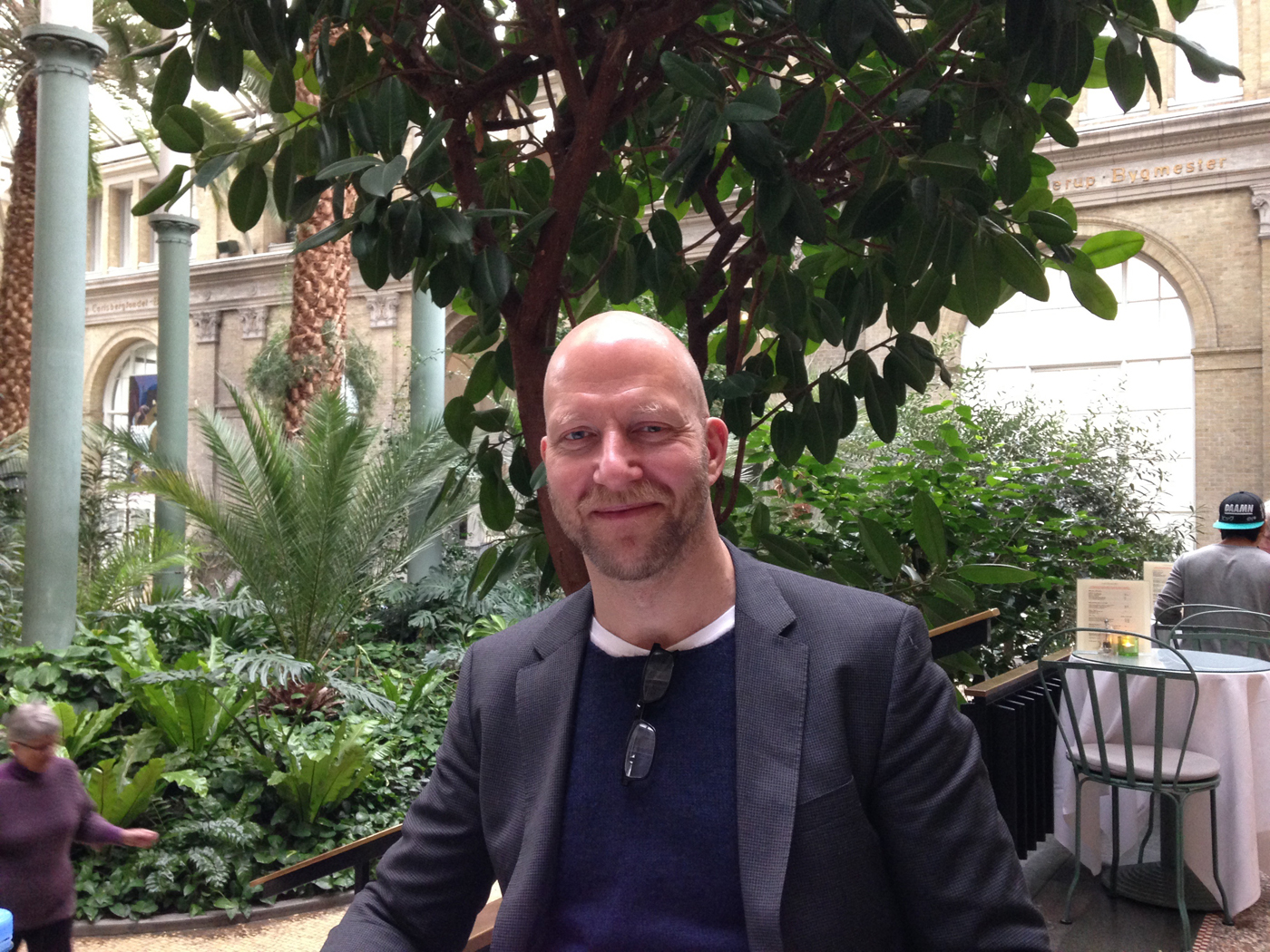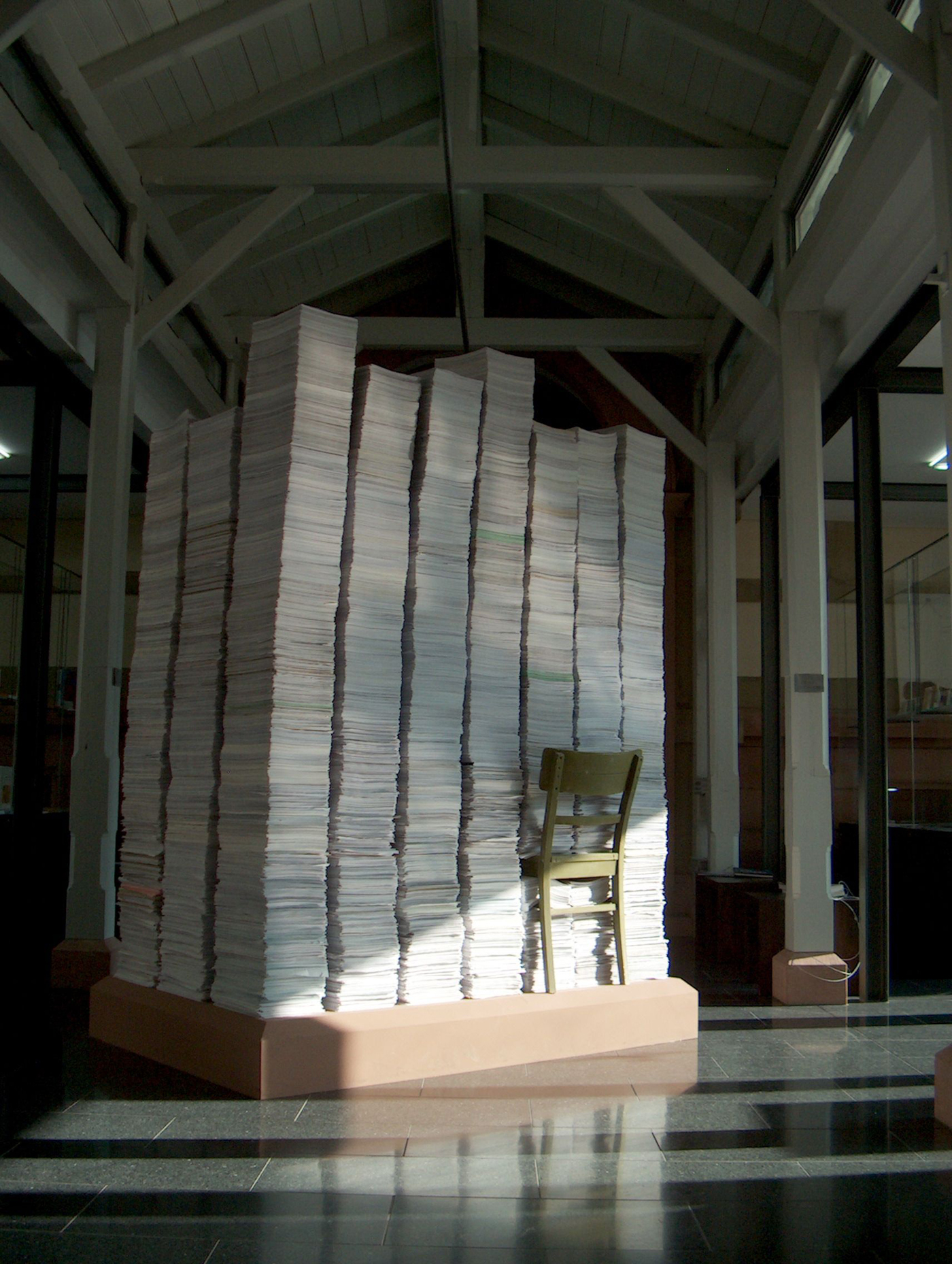CT: I am honoured to welcome for this instalment of In Conversation with, Dr Thomas Röske, Director of the Prinzhorn Collection Museum in Heidelberg and President of the European Outsider Art Association. The Prinzhorn Collection Museum is one of the major international Outsider art collections in Europe and it's named after the art historian and psychiatrist Hans Prinzhorn, who in 1922 published the famous ‘Artistry of the Mentally Ill’ (Prinzhorn, Reference Prinzhorn2001). In this book he examined the problem of the features of psychotic art. Today it's very common to consider Art Brut or Outsider art ‘a child with special needs’. What do you think of this kind of critique, and what narratives do the exhibitions and the permanent collection of the Prinzhorn Collection offer to your visitors?
TR: This is a very complex question. First of all, Prinzhorn talked about different possible common features but in the end, what was very important and what was new in his time was that he denied that there were any common features which would allow one to deduce the psychic condition of the producers. He said that the artwork cannot really be used as diagnostic material to help finding out which kind of illness the producer has, which is very important I think, especially because a lot of psychiatrists have tried again and again in later times to do that.

I wouldn't call Outsider art a child with special needs, although people who produce this kind of artworks have mostly not the same conditions to be self-represented on the art market and on the art scene, so it you look at them in this way, I think in many cases it's important that there are some people helping these artists. Meanwhile in Germany we have the term ‘art assistant’, referring to people who mostly work in supported studios and work with handicapped people or with people with mental illness. I think that in many cases that's really important, plus I think in my view you would miss something out, if you would treat works of Outsider art in the same way as other artworks. You have mostly to know something more about the special ideas behind it, to really appreciate what's in them.
Our awareness of Outsider art is often informed by our experience with contemporary art, but nevertheless it would be careless just to say ‘this looks like Hanne Darboven but just better’, which is always said when the people just look at works which pile up things, or accumulate things like a typical conceptual work, because these artworks are mostly just not conceptual works but they have more to do with the existence of these people.
CT: Mental illness has a stigma of negativity and rejection. One of the primary intentions of the Prinzhorn Collection is to reduce the discrimination and prejudice against people who experience mental illness. What practices work and which challenges have you encountered from a curatorial point of view?

TR: My predecessor, Inge Jádi, decided from 1980 to publish the real names of the artists in the Collection. The official reason which would allow that within German archive rights was to declare them to be ‘personalities of public’. The result is that these people are given an identity outside of their identity as patients of psychiatric hospitals, and I think we are giving them back some rights about their own personality and we rediscover them as being artists, as some people who have really to say something not only about their condition but also about the hospital and about society in general.
The other way is that we present the artworks mounted and framed in the best possible way. We try to conserve, and If necessary, to restore them as best as possible.
Although we are part of the Clinic for General Psychiatry, the Collection is now directed only by art or cultural historians. We don't feel that we should use clinical diagnoses, but if we use clinical terms we have to put them into inverted commas. We talk about the special behaviour and special world view which brought these people into the asylum, the difficulties for society to cope with them, to understand in which way the special experiences of these people were formed by their outstanding psychic experience.
For us it's important to give some dignity to these people and don't treat them anymore as objects of the psychiatric system, which denigrated their dignity.
CT: Dr Röske can you give us an insight into the latest researches in the Outsider art field and tell us which issues are rising and should be taken under examination?
TR: What's more and more important, and I would say fortunately, is that artworks from this field are examined within their cultural context.
I think that it's very important to show that these people were part of the society and culture they grew up in, and were not outside of history; these works in my experience can always be dated.
I think for that reason it is very important to culturally contextualise these works. There is a lot to do about single artists, to work on their lives, on their biographies; this is really important basic work.
It's still very important to look at the history of what we call now Outsider art. There are a lot of chapters, which haven't been really thoroughly examined. The biggest: it would be rewarding to look to uncover more historic art work which is forgotten in old asylum collections or can be found in the thousands of medical files from the late 19th and early 20th centuries in the whole of Europe. But one should also try to find out, for example, why the psychotropic drugs industry in the early 1960s started to become interested in this field. Was it just a bad consciousness because they had silenced all the creativity in the asylums after bringing in psycho-pharmaceuticals? They produced a lot of picture material, the first illustrated, colourful illustrated portfolios and books about art works by mentally ill people. Why did they do it? And what was the content of these books?
And then, only recently, I must admit, I realised that hardly anybody has really worked on disabilities studies and art history, and it would be very important in the perspective of Outsider art, to see how art in this field can lead to self-respect and to self-empowerment of these people working as artists.
CT: Thank you for so many inspiring suggestions. I'd like to close with a last provocative question. Do you think that Outsider art can still be considered a subversive weapon against mainstream art?
TR: I think this idea of Outsider art being completely opposite to cultural art, was very effective after the Second World War when Dubuffet advocated for an Art Brut. Roger Cardinal (Cardinal, 1972) takes this up in his book and tries to give a more academic version of that. But I don't think it should be a provocation in this way, because this leads to nothing. For me, when you compare the book by Cardinal with what Harald Szeemann did in the Documenta 5 (Szeemann, Reference Szeemann1972), Szeemann is really the one who opens the field and who is responsible for everything really productive which came out afterwards – also, in the end, for the show which Massimiliano Gioni did in 2013 (Gioni, Reference Gioni2013; Tansella, Reference Tansella2018). But I think when you really want to include Outsider artworks into the mainstream art, or into the art field, you have to face the fact that these works need some different attention and need some more information also about the life behind the artworks, because if we don't, we have just a cliché in mind about who is behind an Outsider artwork. Only when we do not enter a museum anymore with the idea that every artist behind the artworks that we see, has the same idea about reality and the same experience about reality that we have, only then, these artworks are really included into the art scene. Only then, I think, these works have entered the art scene as a whole.
CT: Thank you Dr Röske for this enlightening conversation on the latest practices in contemporary and Outsider art and for the efforts the Prinzhorn Collection puts into improving the life of artists with mental illness.
TR: Thank you, it was a pleasure.
About the author
Thomas Röske, Ph.D., is the Director of the Museum Prinzhorn Collection, University Hospital of Heidelberg since 2002 and the President of the European Outsider Art Association since 2012. He teaches regularly at the art historical departments of the universities of Heidelberg and Frankfurt. This conversation, which has been edited and condensed, was an original contribution to the international conference Into the Wild. Percorsi nell'Arte Oustsider e Contemporanea, held at the Museum of Modern Art of Bologna the 13th of October 2018.
Carole Tansella, Section Editor




